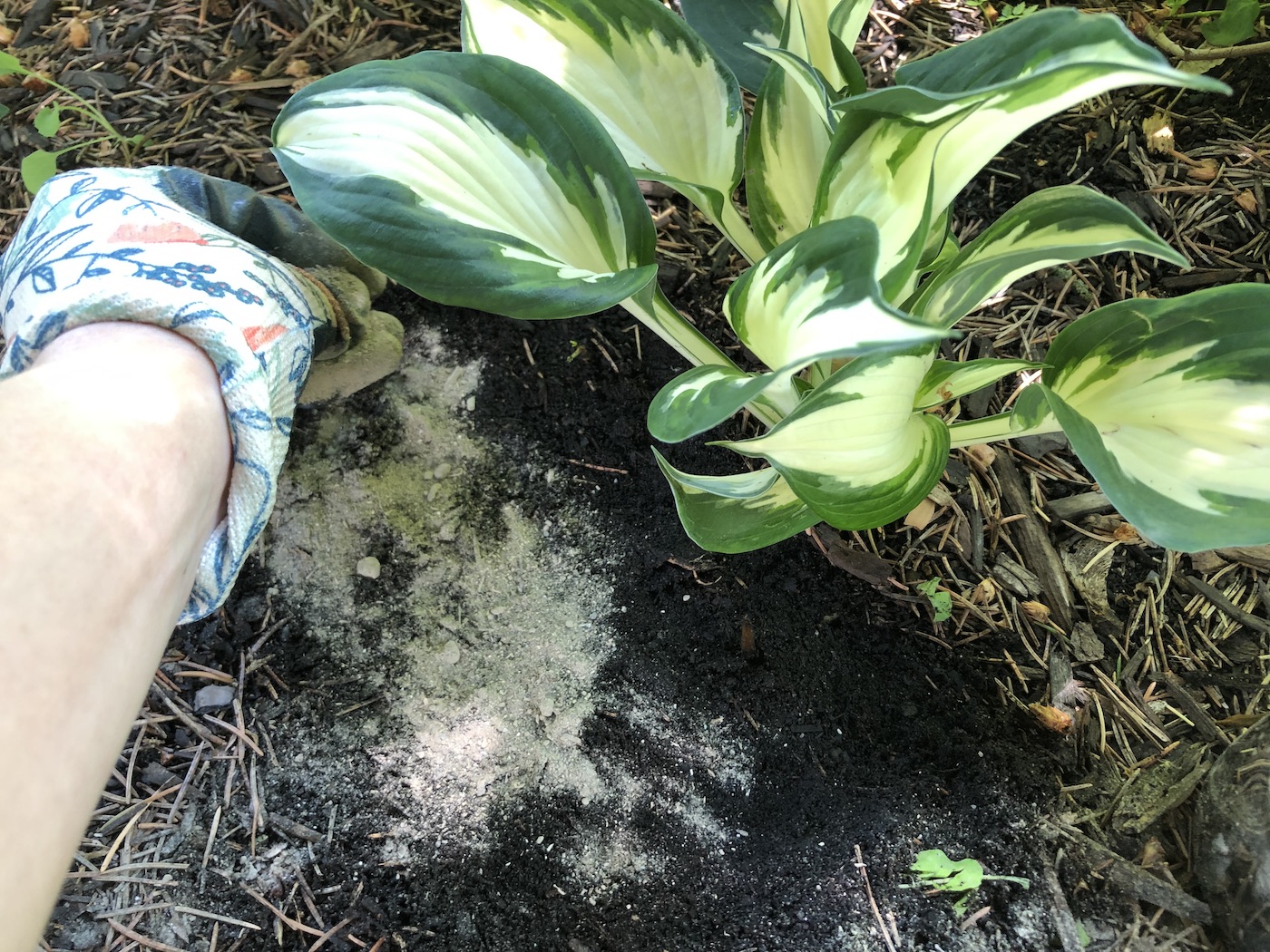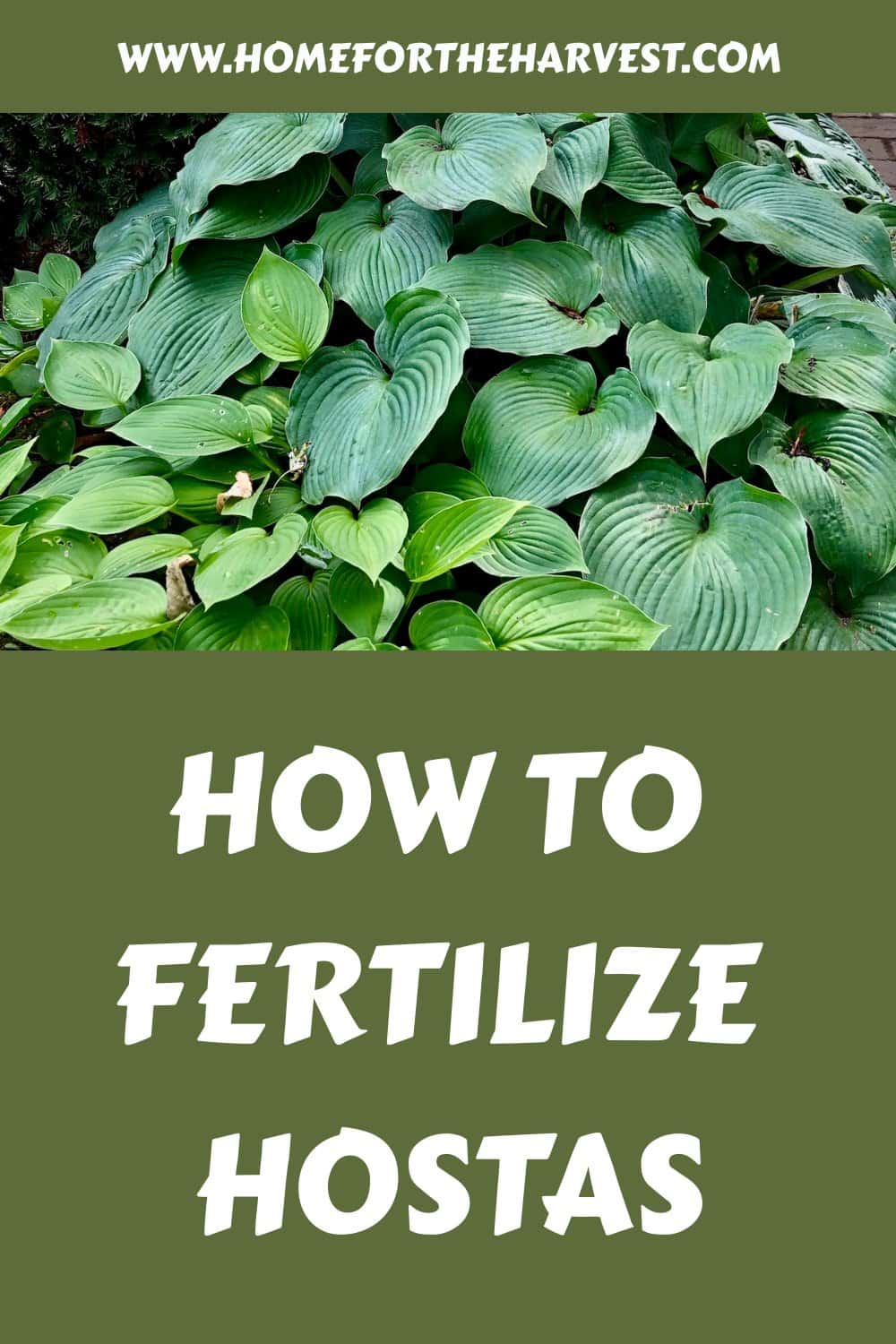The easiest way to fertilize hostas is to sprinkle a slow-release granular fertilizer on the soil surface in the springtime. The nutrients will seep down towards the roots whenever the plant is watered. Applying an organic mulch to the surface of the soil is also a great way to feed these wonderful ornamentals.
You can also feed hostas with a concentrated liquid fertilizer that is diluted either in a watering can or with a hose nozzle attachment. Hosta aficionados may also want to use a foliar fertilizer spray on the leaves in spring and summer.
Slow-release balanced fertilizers
Slow-release granular fertilizers are the easiest way to feed your hosta plants. These packaged products tend to have a balanced ratio of nutrients that are released into the soil over a period of 8-12 weeks. Some are pelleted or powdered, but most are granular.
Here are the basic instructions for some popular fertilizers for hostas:
1. Jobe’s Organics Purpose Granular Fertilizer
Jobe’s Organics Purpose Granular Fertilizer is a balanced all-purpose organic fertilizer that’s easy to use. This product comes in big 16-pound bags and is measured by the cup. There are about 3 cups in a pound, so a big bag contains about 48 cups.
Use 1 ½ cups of fertilizer for each square foot of spread. Most hostas are over a foot wide, but there are a few mini hosta varieties that will need less than this amount. If your hosta is over 3 feet wide, just use 2 cups of Jobe’s Organics fertilizer.
Granular fertilizer is usually applied onto the “drip line” around the hosta. The roots are generally a bit wider than the foliage, so the fertilizer can be applied in a wide ring around the base of the plant, extending slightly past the leaves. Don’t apply fertilizer right at the base of the plant, as this can burn the stems.
2. Espoma Holly-Tone
Espoma Holly-Tone Organic Fertilizer is another all-purpose fertilizer commonly used for growing healthy hostas. This fertilizer is also granular, but it’s a bit finer than Jobe’s. Espoma Holly-Tone comes in various sizes, including 4, 8, 18, 36, and 50-pound bags. There are about 3 cups of fertilizer per pound.
For small and medium-sized hostas, use 1 cup of Holly-Tone per foot diameter of the leaves of the hosta plant. For hostas that are three feet across or wider, use 2 cups of Holly-Tone per foot of diameter. This means a giant hosta that’s 5 feet across can be fed with up to 10 cups of Holly-Tone in the spring! That said, it’s always better to underapply fertilizer than to overapply it.
3. Down to Earth All Natural Acid Mix
Down to Earth All Natural Acid Mix Fertilizer is an all-purpose fertilizer for plants that thrive in acidic soil (like hostas). This is an excellent option for those with more miniature hostas or only a few plants to feed.
Use 2-4 ounces of Down-to-Earth fertilizer per hosta. This fertilizer is “side-dressed,” meaning you sprinkle it onto the soil surface beside the base of the plant. As noted above, try not to get the fertilizer on the base of the plant itself. It should be applied to the soil.
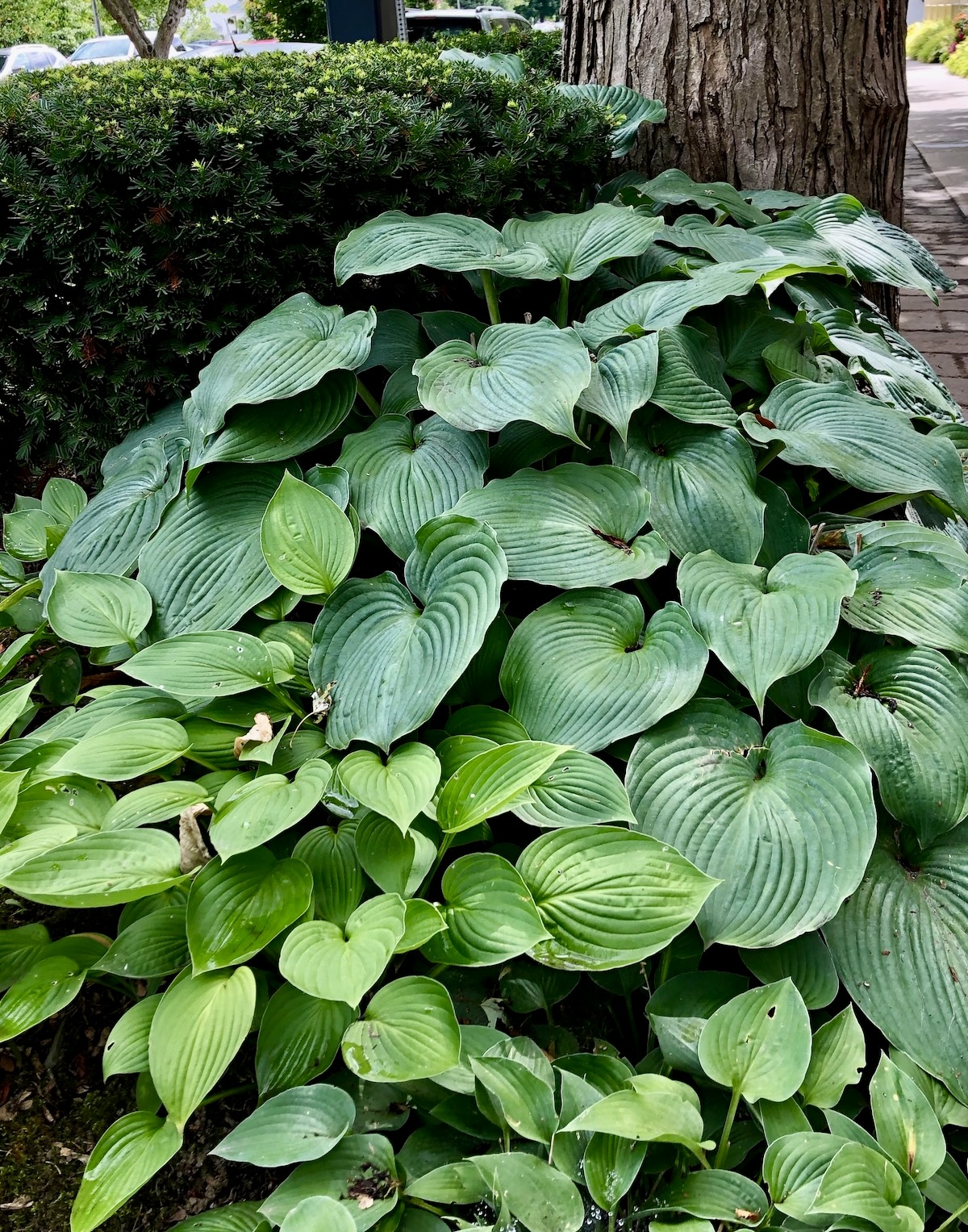
Foliar Fertilizer Sprays
Specialty hosta growers often use foliar fertilizer sprays in spring and early summer. Some products come ready to use in a spray bottle, while others must be diluted and/or added to your own spray bottle or sprayer pack at home.
1. FOOP Mist Ready to Use Organic Foliar Spray
FOOP Mist Ready to Use Organic Foliar Spray comes in a spray bottle. This mix is very easy to use as there is no mixing or decanting. Just spray it on the leaves of the hostas in the morning or evening. It can be used every week or two during springtime and early summer.
2. Bloom City Organic SuperGreen Kelp Foliar Spray
Organic SuperGreen Kelp Foliar Spray by Bloom City is a bottled foliar fertilizer that you mix up and put in your own sprayer at home. To use, mix 1-2 teaspoons into a liter of water in a hand sprayer or larger sprayer pack. Then spray the foliar feed on the plants in the early morning or the evening (not during the heat of midday, even in the shade). This product can be used once or twice each week.
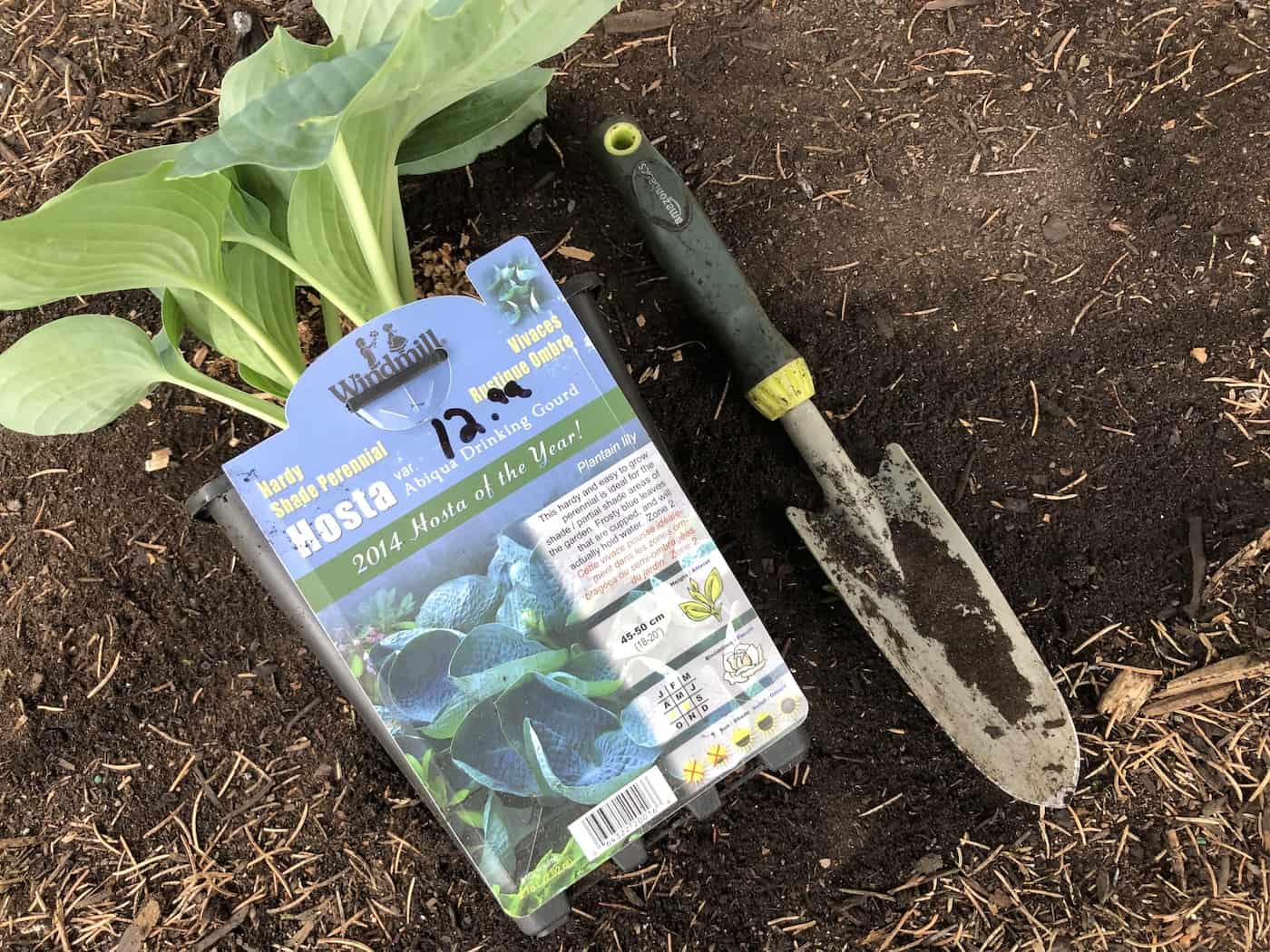
Starter fertilizers for planting and transplanting
Starter fertilizer is a common product to mix into your garden soil prior to planting hostas. This can be done if you’re planting new hosta plants or transplanting existing hostas to new locations (or just dividing your hostas).
1. Espoma Bio-Tone Starter Plus Fertilizer
Espoma’s Bio-Tone Starter Plus Fertilizer is one of the most popular starter fertilizers for transplanting hostas. Use 1 cup of fertilizer for hostas in pots up to 2 gallons (or when planting bare root hostas), and use 2 cups for larger hostas in 5-gallon pots. Mix the fertilizer and some organic matter into the soil prior to digging the planting hole. Be sure to amend the soil over the whole future footprint of the plant.
2. Down to Earth Starter Mix
Down to Earth’s Starter Mix is another popular planting fertilizer. This is best for planting small baby plants as it’s packaged in a small box. Just add 1-2 tbsp to the planting hole and mix the fertilizer into the existing soil. Water well after planting.
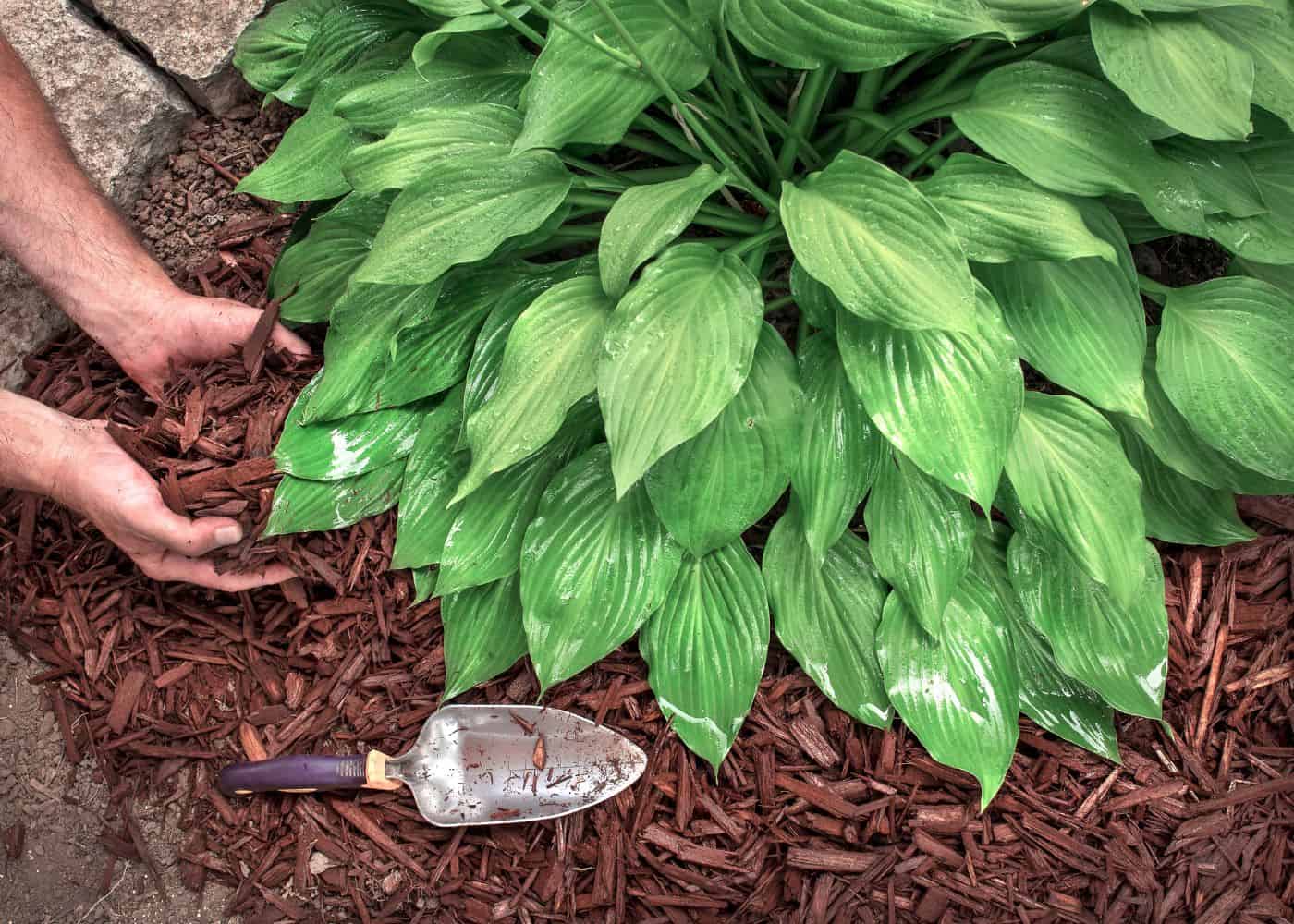
Mulching hostas
Mulching your hostas with organic matter helps to keep the roots cool and moist in summer and also suppresses weeds. It also provides a slow and steady stream of nutrients to your plants. This is the only fertilizer that should be applied in the fall, as it’s usually quite gentle.
Good mulches for hostas include shredded bark, compost, cocoa shells, coconut coir, pine needles, or hardwood chips. Mulch protects hostas from extremes of heat and wetness, and it aids in retaining moisture in the soil.
Keep the mulch away from the hosta’s base during the growing season to prevent fungal disease. Make sure the mulch spreads out further than the plant’s leaves in the summer.


